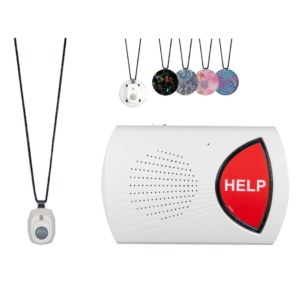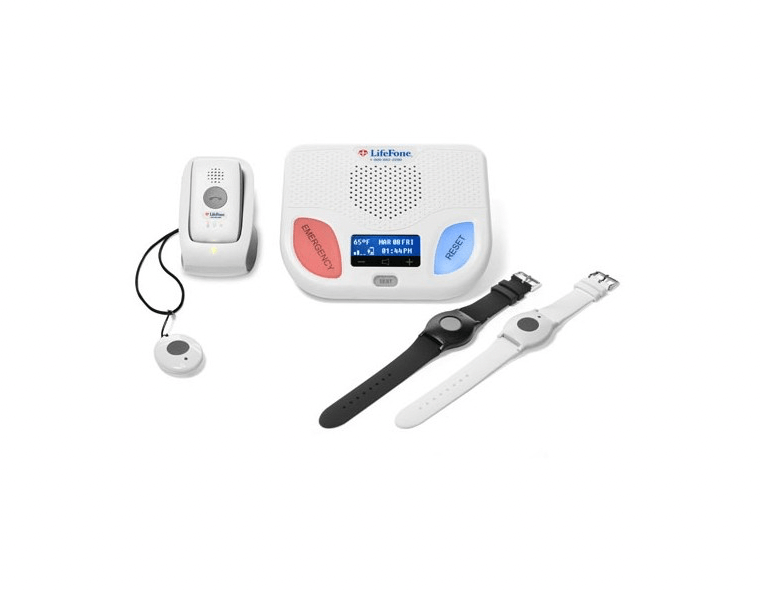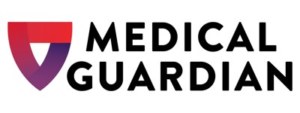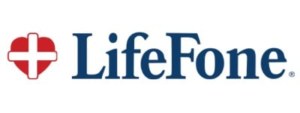Best Medical Alert Necklaces For Older Adults
AgingInPlace.org keeps our resources free by working as an affiliate partner with some companies mentioned on our site. These partnerships or the commission we may earn do not affect our opinions or evaluations of the products we mention. Our reviews are solely based on our research methodology and from input from our AgingInPlace.org Advisory Board. Learn more about our ad policies.
Best Medical Alert Necklaces For Older Adult...
Products carousel
Medical alert necklaces are part of a medical alert system that lets you easily contact help in an emergency. The best medical alert necklaces come with features you can individualize to your needs, like automatic fall detection, GPS monitoring, and, some might say most importantly, stylish designs. We’ve reviewed the top medical alert necklaces based on their different features, as well as the medical alert systems they come with to help you find the one that’s right for you. Whether you’re at home or on-the-go, your help button is never far from your fingertips with any of these best medical alert necklaces.
Top Medical Alert Necklaces
- Best for an Active Lifestyle: Medical Guardian
- Best Pricing Options: Bay Alarm Medical
- Best At-Home System: MobileHelp
- Best Mobile System: LifeFone
- Best for Those Without a Landline: Lively
- Best for Mobility Challenges: Aloe Care Health
How We Research and Test Medical Alert Necklaces
You deserve the best products for a better quality of life. As such, we strive to create honest, helpful reviews that are backed by firsthand shopping, testing, and research. Our content is medically reviewed and unbiased to help you choose the right medical alert system for you or your loved one.
From over 1,000 hours of research, we chose six of the top brands that we believe are the best medical alert necklaces. We did the following throughout our research process:
- Engaged in ongoing independent research
- Consulted with geriatricians and adult caregivers
- Mystery shopped the brands
- Surveyed 1,000 medical alert system users
- Tested various medical alert systems
- Interviewed experts in the field
- Read hundreds of verified customer reviews from trusted third parties, such as Better Business Bureau (BBB) and Trustpilot
We grade each medical alert company against a 1–10 rating scale and score them according to the following categories:
- Essential features
- Product functionality
- Special features
- Customer service
- Purchasing process
Features and criteria within each of these five categories are assigned point values. The more points a company receives for each criteria, the higher it scores in the overall category.
See our full explanation of our methodology for a full breakdown of criteria in each category and our scoring system.
Best Medical Alert Necklaces
There are a lot of medical alert necklaces on the market, and they vary by cost, features, and style. The good news: We’ve narrowed down your options to help you find the best one to suit your needs.
- Cost: $29.95-$34.95/month for at-home models, $39.95 per month for mobile models
- Fall detection: $10 per month
- Activation fee: $0
- Equipment fee: $0-$149.95
- In-home range: 1,300 feet for landline, 1,400 feet for wireless at-home models
We chose Medical Guardian as the best medical alert necklace brand for an active lifestyle because of its lightweight medical necklaces and long ranges for at-home models.
On-the-go models include the Mobile 2.0 and the Mini Guardian. Both of these can attach to a lanyard to be worn as on-the-go necklaces. These necklaces are rectangular and come with a two-way speaker and help button in one (so you don’t have to get close to the base station to talk to the monitoring center). Each device weighs less than two AA batteries—the Mini weighs 1.3 ounces and the Mobile 2.0 weighs 1.7 ounces. They also have a fairly long battery life of three to five days for the Mobile 2.0 and five days for the Mini Guardian. GPS tracking is automatically included with both mobile necklaces.
Medical Guardian monitoring centers are TMA Five Diamond Certified and, in our testing, respond quickly to the push of a button—within 15 seconds.
- Cost: $24.95-$39.95 per month for at-home, $29.95-$39.95 per month for mobile, $49.95 for bundle systems
- Fall detection: $10 per month for SOS mobile, $10 per month for at-home systems
- Activation fee: $0
- Equipment fee: $0-$159
- In-home range: 1,000 feet
With a lower monthly plan than most competitors and a price-locked monthly subscription at signup, Bay Alarm Medical is our best pricing options system. It offers necklaces with all at-home models and the SOS Mobile device. Bay Alarm Medical also offers an extra element of style with its waterproof Bella Charms accessories. Bella Charms attach to Bay Alarm Medical necklaces that pair with at-home models so that it looks like you’re wearing a fashionable pendant.
Bay Alarm Medical’s mobile necklace, the SOS Mobile, comes in black and can be worn as a necklace with the nylon lanyard it comes with. It weighs 1.3 ounces and has a battery life of six days. It comes in three package options: the SOS Mobile Lite without automatic fall detection, the SOS Mobile Plus with automatic fall detection included, and the Mobile 360 Bundle that includes the SOS Mobile and an at-home system. GPS tracking is automatically included with these mobile necklaces. Cellular coverage for on-the-go necklaces is offered through both AT&T and Verizon, which helps if you’re living in an area that gets better coverage from one company than the other.
- Cost: $19.95-$54.95 per month for at-home, $33.95-$37.95 per month for mobile, $41.95-$64.95 per month for bundle systems
- Fall detection: $5 per month special, normally $10 per month
- Activation fee: $0 for all systems
- Equipment fee: $0
- In-home range: 600 feet for landline, 1,400 feet for wireless at-home models
MobileHelp isn’t the best at-home system for nothing: It offers three at-home systems—the Classic, the Wired Home, and the Touch Classic—while most brands offer just two. Its at-home wireless systems offer a generous protection range from the base station, tied with Medical Guardian and LifeFone. On-the-go systems that can be worn as necklaces by connecting them to a lanyard include the Solo, Micro, and Mobile Duo. Bundle systems are the Duo and Touch Duo. MobileHelp is one of the few medical alert companies to offer touchscreen base stations in its systems the Touch Classic and Touch Duo.
MobileHelp medical alert necklaces come with all eight systems the company offers. The Micro’s rechargeable battery lasts the longest—5 days–compared to Solo and Mobile Duo’s rechargeable battery that lasts only 24 hours. In our testing, response times were fast, within 15 seconds, even though the company´s monitoring center is not TMA Five Diamond Certified.
All of MobileHelp’s mobile and bundle devices include GPS tracking. Fall detection is available with all systems except the Wired Home landline system. For additional costs per month, MobileHelp offers medication reminders and access to MDLive, an app for physician visits over video or phone.
- Cost: $24.95-$30.95 per month for at-home systems, $36.95-$41.95 per month for bundle systems
- Fall detection: $5 per month for at-home and VIPX and VIP Active models, $10 per month for all other bundle systems
- Activation fee: $0
- Equipment fee: $0
- In-home range: In-home and wireless at-home models have a range of up to 1,300 feet
LifeFone earns its reputation as the best mobile system because of its extensive battery life that lasts up to one month with some medical alert necklaces—other brands only typically last up to a week or less. LifeFone´s on-the-go necklaces are also super lightweight, weighing in at just 1.3 ounces. LifeFone’s on-the-go medical alert necklaces are the VIP, VIPX, and VIP Active. The VIP is the oldest version of the three, is bulkier, rectangular, comes in only one color (black), and connects to AT&T networks only. VIPX is lighter in weight, rectangular, comes in three color options (silver, white, and black), and connects to AT&T or Verizon networks. VIP active is roughly the same size and weight as VIPX but comes in one color (black), is teardrop-shaped, and connects to AT&T networks only. With the VIPX, you can add a caregiver app for $8 a month. This app is not available with VIP or VIP Active. While the VIP active has only a 5-day battery life, the VIPX’s battery lasts 16 days and the VIP’s lasts 30 days. Even better, representatives will text you to remind you to charge your battery when it starts to get low.
With its at-home medical alert systems, LifeFone offers a decorative pendant called the vanity pendant. This stylish jewelry pendant comes with a gold chain and is oval-shaped with pearl white, gold, and silver rings encircling it. It is water resistant and has a two-year replaceable battery. The vanity pendant does not have fall detection capabilities or the option to add it on.
During our research with testing the LifeFone monitoring center’s response times, the average response time fell within our second-highest scoring criteria range, which is between 15-25 seconds. This is slower than Medical Guardian, Bay Alarm Medical, MobileHelp, and Aloe Care Health. It’s also worth noting that LifeFone’s monitoring center is not TMA Five Diamond Certified.
LifeFone’s base stations have room temperature sensors that alert you when your home temperature goes above or below your settings. With select systems, LifeFone offers fall detection for less than most other brands.
- Cost: $24.99-$39.99 per month
- Fall detection: Available only with the Ultimate package and included in the $39.99 per month subscription
- Activation fee: $35
- Equipment fee: $49.99
- In-home range: Only mobile devices offered
Lively’s medical alert system is perhaps for the minimalist interested in only mobile systems and easy shopping because Lively offers just one medical alert necklace, the Lively Mobile Plus. The Lively Mobile Plus comes in silver and has a battery life of around three days, is waterproof, and includes GPS tracking with all subscription plans. While the Lively Mobile Plus is quite boxy, at 1.98 oz (less than a quarter of a pound), it’s no heavier than the typical medical alert necklace.
You can choose from three subscription plans: the Basic, the Preferred, and the Ultimate. The Basic offers just monitoring services. Preferred and Ultimate plans offer monitoring, 24/7 access to doctors and nurses through Urgent Care, and the Lively Link app for caregivers to know you’re safe. The Ultimate goes a step further by offering fall detection. None of the monitoring services offered with any of Lively’s plans are TMA Five Diamond Certified. The Lively Mobile Plus uses Verizon cellular service.
AARP members can receive a $60 discount on Preferred and Ultimate plans every year when they subscribe to Lively Mobile Plus.
- Cost: $29.99 per month for at-home, $24.99 per month for mobile, and $39.99-$49.99/month for bundle systems
- Fall detection: Included with all mobile devices at no additional cost
- Activation fee: $0
- Equipment fee: $99-$349.99
- In-home range: 200 feet
Aloe Care Health earns the best medical alert system for mobility challenges. It’s better suited to older adults living in small spaces, like apartments or assisted living facilities, because its at-home systems are limited to a protection range of only 200 feet. Aloe Care Health also has good caregiver apps included at no additional cost so remote caregivers can easily stay in touch. The Aloe Care Health App allows an unlimited number of caregivers to check on you through a voice-activated base station, or smart hub, or the care button that it pairs with, and they’ll receive updates during an emergency. This smart hub also has built-in motion, home temperature, and air quality sensors.
Aloe Care Health includes a necklace with all four of its plans. The Mobile Companion weighs 2.5 ounces and has a battery life of up to five days. Aloe Care Health’s cellular network typically runs on AT&T. Through our testing, we found Aloe Care Health’s response times to be fast—within 15 seconds of help button activation—and its monitoring center is TMA Five Diamond Certified.
Fall detection is included at no additional cost with all systems that contain on-the-go necklaces, including all but the at-home Essentials Package. GPS tracking is included with all on-the-go necklaces as well. One downside that our team found when testing Aloe Care Health’s fall detection was that we had to say “emergency” several times to get an emergency response from the base station or fall detection sensor.
What Is a Medical Alert Necklace?
A medical alert necklace is a wearable device that allows the user to call for emergency help with the press of a help button. Medical alert necklaces, commonly called life alert necklaces, are available as part of an at-home or on-the-go medical alert system. The at-home device typically connects to a base station that allows coverage for a specified range.
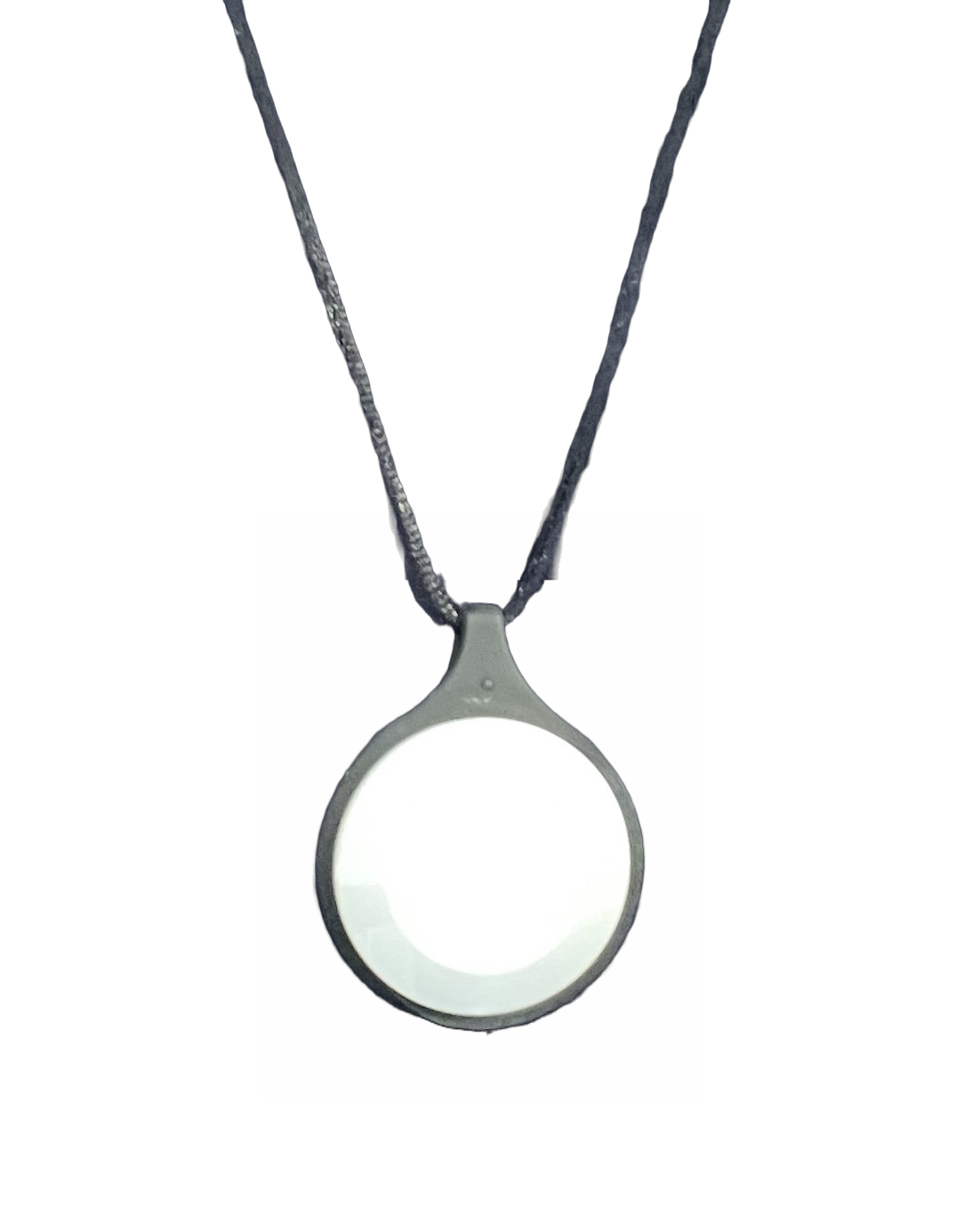
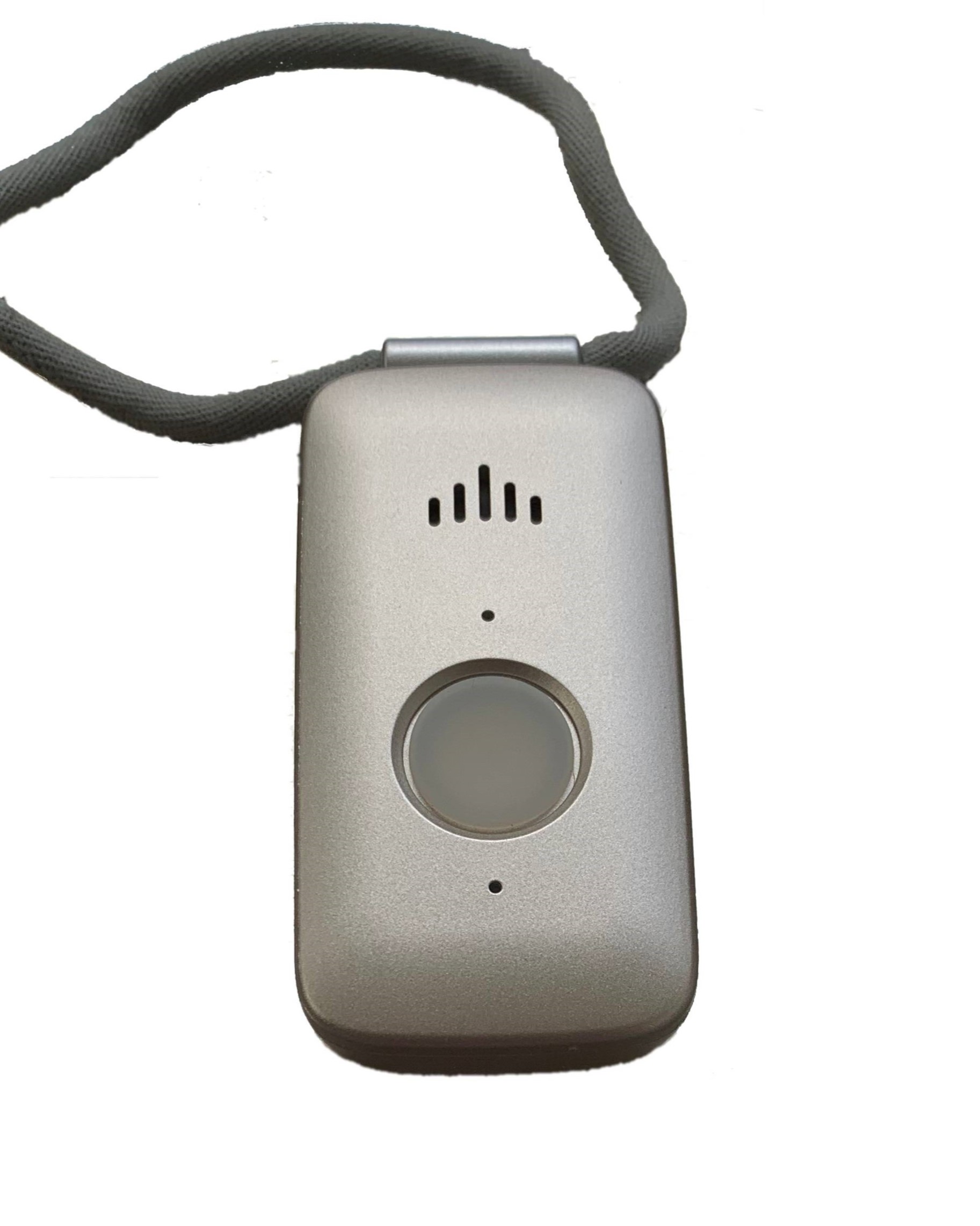
At-home systems come with a base station that either plugs into the wall as a landline or is wireless and runs off of a cellular network. Necklaces paired with these systems let you call for help up to a certain distance from the base station. The standard necklaces that automatically come with at-home systems are similar in appearance and function across most brands. Some brands, like LifeFone and Bay Alarm Medical, offer decorative pendants or pendant accessories to disguise the help button as a piece of jewelry, which helps distinguish these at-home necklaces from other brands. But because most at-home necklaces are so similar, it’s more important to look at the features of the base stations they pair with and the reputation of the medical alert company itself when deciding which one to purchase. At-home models also offer separate necklaces known as fall detection pendants that can be purchased at an additional cost each month. Fall detection pendants are also very similar in appearance and function across most brands.
On-the-go, or mobile, devices use cellular service and aren’t limited by the range of a base station, so you can use your necklace when you’re away from home. The on-the-go device is a necklace because it attaches to a lanyard to be worn from the neck, but it can be worn in other ways as well, such as on a belt clip. They don’t require a cell phone plan, and cellular service fees are included in the subscription to the medical alert system. You can also “bundle” medical alert systems to include both at-home and on-the-go systems on one subscription plan.
“Medical alert systems and necklaces are important for overall safety and peace of mind. At the push of a button, appropriate emergency channels are contacted, and the response is immediate to ensure quick help and support.”
Carl McManus, Chief Executive Officer of Comfort Keepers, a company that provides caregivers to older adults living at home
How Medical Alert Necklaces Work
Medical alert necklaces work by connecting you to an operator at a monitoring station once you press the help button on the necklace. The operator may respond to your request for help by contacting friends, family, or 911 if necessary and are available to assist you 24/7, any time you press the help button. Operators also help you decide if you need emergency assistance or less urgent help from a caregiver.
For at-home medical alert necklaces, once you push your help button, you can speak to the operator through your base station’s speaker when you’re close to it or through add-on voice-activated wall buttons that also contain speakers. If you’re not near any of your speakers for two-way communication, the operator will still receive your call for help and send an ambulance if they can’t get in touch with you or your emergency contacts.
On-the-go medical alert necklaces come equipped with a speaker so you can communicate with the monitoring center directly through the necklace. They run off of rechargeable batteries. Some on-the-go necklaces are voice-activated and will respond to a verbal request for help instead of the push of a button. On-the-go necklaces can also use GPS tracking so the operator can find your exact location if you need help when you’re away from home.
Both at-home and on-the-go medical alert necklaces have the option of automatic fall detection. To get fall detection with at-home models that come with a standard help button necklace and base station, you have to buy a separate fall detection necklace in addition to the default necklace that is included with the system. With mobile necklaces, you can add fall detection capabilities to the necklace itself. Fall detection means the device can detect when you’ve fallen and will call the monitoring station if you’ve fallen and can’t press the button yourself.
How long an operator takes to respond to your call for help is known as the response time. The fastest response times are 15 seconds or less.
Difference Between a Medical Alert Necklace and a Medical ID
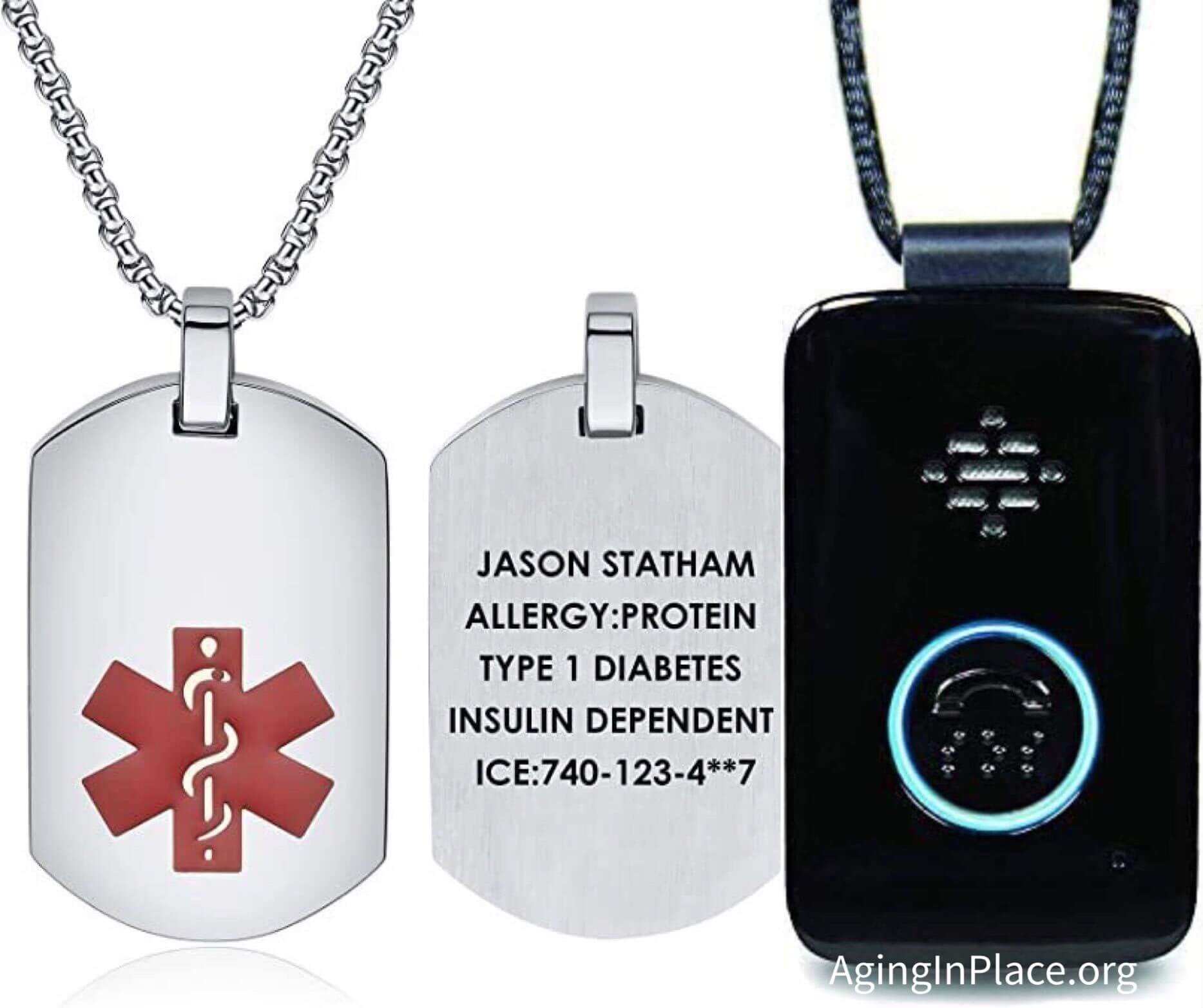
Medical alert necklaces and medical ID alert necklaces (also called medical ID necklace or medical ID pendant) are used for different purposes. A medical ID alert necklace will not help you request help from family or medical personnel during an emergency. Medical ID necklaces are tags that list your health conditions should you be unable to verbally communicate this information to medical personnel if they need to administer treatments that could conflict with one of your conditions. Medical alert necklaces include the help button that’s part of a medical alert system and helps you call for assistance during an accident or emergency. You should use a medical alert necklace over a medical ID pendant if you need a help button for requesting assistance from a monitoring center.
Do I Need a Medical Alert Necklace?
Older adults, people recovering from surgery, or anyone with physical or cognitive deficits that put them at risk of falls or injuries may benefit from a medical alert necklace.
“Most adults prefer to age in place at home, and home safety modifications and safety devices such as medical alert systems can help them effectively do just that. As people age, they are at an increased risk of having chronic conditions, more inactivity, unstable gait and balance, and taking more prescription medications—all of these factors increase the risk of falls.”
Claudia Wong, FNP-BC, a specialist in memory care, at the Pacific Neuroscience Institute at Providence Saint John’s Health Center in Santa Monica
Medical alert systems also go a long way in giving your loved ones peace of mind knowing you have a way to get help when they can’t be there with you in person. And for the fashion-conscious, some may even say medical alert necklaces can be trendy and fashionable.
Where to Buy a Medical Alert Necklace
You can purchase life alert necklaces as part of your personalized medical alert system package directly from the manufacturer’s website or from third-party retailers like Amazon, Walmart, and Walgreens. Some systems, however, are only available directly from the manufacturer.
Also, some medical alert companies don’t sell systems but instead lease them, so you can use their systems for however long you subscribe to their services. Each company’s customer service team can give you more specific details on the medical alert necklace and system you’re interested in.
How Much Do Medical Alert Necklaces Cost?
Monthly Costs
Medical alert pendants vary in cost depending on their equipment, features, and subscriptions. Medical alert companies charge a monthly fee that includes a subscription to their monitoring service. Some companies will automatically include other costs in their subscription fee, like the monthly fee for leasing a device if you’re not buying it, GPS tracking, and access to caregiver apps. Other fees may be added on to your monthly subscription fees depending on what optional features you select with your life alert necklace. Many companies also charge upfront costs to buy and ship their equipment, and some charge activation fees.
| Company | At-Home Monthly Fee | Mobile Monthly fee | Fall detection |
|---|---|---|---|
| Medical Guardian | $29.95-$34.95 per month | $39.95 per month | $10 per month |
| Bay Alarm Medical | $24.95-$39.95 per month | $29.95-$39.95 per month, $49.95 per month for bundle systems | $10 per month |
| MobileHelp | $19.95-$54.95 per month | $33.95-$47.95 per month, $41.95-$64.95 per month for bundle systems | $5-$10 per month |
| LifeFone | $24.95-$30.95 per month | $36.95- $41.95 per month for bundle systems | $10 per month |
| Lively | $24.99-$39.99 per month | $24.99-$39.99 per month | Available only with the Ultimate package and included in the monthly subscription of $39.99 per month |
| Aloe Care Health | $29.99 per month | $24.99 per month, $39.99-$49.99 per month for bundle systems | Included with all mobile systems at no additional cost, not available with the at-home model |
| Company | |||||||||||||||||||||||||||||||||||||||||||||||||||||||||||||||||||||||||||||||||||||||||||||||||||||||||||||||||||||||||||||||||||||||||||||||||||||||||||||||||||||||||||||||||||||||
| Medical Guardian | At-Home Monthly Fee | $29.95-$34.95 per month | Mobile Monthly fee | $39.95 per month | Fall detection | $10 per month |
|---|
| Bay Alarm Medical | At-Home Monthly Fee | $24.95-$39.95 per month | Mobile Monthly fee | $29.95-$39.95 per month, $49.95 per month for bundle systems | Fall detection | $10 per month |
|---|
| MobileHelp | At-Home Monthly Fee | $19.95-$54.95 per month | Mobile Monthly fee | $33.95-$47.95 per month, $41.95-$64.95 per month for bundle systems | Fall detection | $5-$10 per month |
|---|
| LifeFone | At-Home Monthly Fee | $24.95-$30.95 per month | Mobile Monthly fee | $36.95- $41.95 per month for bundle systems | Fall detection | $10 per month |
|---|
| Lively | At-Home Monthly Fee | $24.99-$39.99 per month | Mobile Monthly fee | $24.99-$39.99 per month | Fall detection | Available only with the Ultimate package and included in the monthly subscription of $39.99 per month |
|---|
| Aloe Care Health | At-Home Monthly Fee | $29.99 per month | Mobile Monthly fee | $24.99 per month, $39.99-$49.99 per month for bundle systems | Fall detection | Included with all mobile systems at no additional cost, not available with the at-home model |
|---|
Upfront Costs
Upfront costs vary within the same company depending on the cost of the device and whether you buy or lease it. Some companies only let you lease their products. Other companies allow you to lease only certain devices and buy others. Medical alert companies often offer free shipping as a promotion or with longer subscriptions. The best way to know what their current promotions are is to call and ask a sales representative.
| Company | Shipping fee | Activation fee | Equipment fee |
|---|---|---|---|
| Medical Guardian | $12.50 | $0 | $0-$149.95 |
| Bay Alarm Medical | $12 | $0 | $0-$159 |
| MobileHelp | $15 with monthly subscriptions, free with quarterly, semi-annual, and annual subscriptions | Typically $0 with all systems | $0 |
| LifeFone | $11.95 (but free with many plans/products) | $0 | $0 |
| Lively | Free ground shipping | $35 | $49.99 |
| Aloe Care Health | $0 | $0 | $99-$349.99 |
| Company | ||||||||||||||||||||||||||||||||||||||||||||||||||||||||||||||||||||||||||||||||||||||||||||||||||||||||||
| Medical Guardian | Shipping fee | $12.50 | Activation fee | $0 | Equipment fee | $0-$149.95 |
|---|
| Bay Alarm Medical | Shipping fee | $12 | Activation fee | $0 | Equipment fee | $0-$159 |
|---|
| MobileHelp | Shipping fee | $15 with monthly subscriptions, free with quarterly, semi-annual, and annual subscriptions | Activation fee | Typically $0 with all systems | Equipment fee | $0 |
|---|
| LifeFone | Shipping fee | $11.95 (but free with many plans/products) | Activation fee | $0 | Equipment fee | $0 |
|---|
| Lively | Shipping fee | Free ground shipping | Activation fee | $35 | Equipment fee | $49.99 |
|---|
| Aloe Care Health | Shipping fee | $0 | Activation fee | $0 | Equipment fee | $99-$349.99 |
|---|
Are Medical Alert Necklaces Waterproof?
Some medical alert necklaces are waterproof and others are water-resistant. Water-resistant necklaces can be splashed with water, such as when in the shower or out in the rain, without causing harm. Whereas, waterproof necklaces can be submerged in water, so you can wear them when bathing or swimming.
All medical alert necklaces we featured are water-resistant at minimum. At-home necklaces are typically waterproof, while on-the-go necklaces tend to be only water resistant.
| Company | At-Home Pendants | Mobile Necklaces |
|---|---|---|
| Medical Guardian | Waterproof | Water-resistant |
| Bay Alarm Medical | Waterproof | Water-resistant |
| MobileHelp | Waterproof | Water-resistant |
| LifeFone | Waterproof | Water-resistant |
| Lively | Waterproof | Waterproof |
| Aloe Care Health | Water-resistant | Water-resistant |
| Company | ||||||||||||||||||||||||||||||||||||
| Medical Guardian | At-Home Pendants | Waterproof | Mobile Necklaces | Water-resistant |
|---|
| Bay Alarm Medical | At-Home Pendants | Waterproof | Mobile Necklaces | Water-resistant |
|---|
| MobileHelp | At-Home Pendants | Waterproof | Mobile Necklaces | Water-resistant |
|---|
| LifeFone | At-Home Pendants | Waterproof | Mobile Necklaces | Water-resistant |
|---|
| Lively | At-Home Pendants | Waterproof | Mobile Necklaces | Waterproof |
|---|
| Aloe Care Health | At-Home Pendants | Water-resistant | Mobile Necklaces | Water-resistant |
|---|
What to Consider When Buying a Medical Alert Necklace
When shopping for a medical alert necklace, you want to make sure you consider all the features it comes with.
Fall Detection
In a survey of 1,000 Medical Alert System users conducted by AgingInPlace.org, respondents stated that fall detection was the most important feature they looked at when purchasing a medical alert system. Automatic fall detection is a safety feature available with most medical alert necklaces. It allows your medical alert necklace to detect when you’ve fallen and call your monitoring center without you having to do anything. This is especially important since people may lose consciousness before or during a fall, making them unable to call for help on their own. Most companies charge an additional monthly fee on top of your subscription for this feature.
Response Time
The response time is the average time it takes for an operator to pick up your call after the help button’s been activated. The shorter the response time, the better. In general, this ranges from 12-60 seconds. In our scoring criteria, anything under 15 seconds is considered the fastest response time. Anything over 25-35 seconds is relatively slow.

Battery Life
All on-the-go necklaces come with a rechargeable battery. How often you need to charge a medical alert necklace is a key consideration for many people, especially if you’ll be using it on the go. For many on-the-go necklaces we tested, battery life lasts almost a week.
Style
Most medical alert necklaces are similar in style but differ slightly in size. In general, the wearable device is either rectangular (usually for mobile necklaces) or circular (usually for at-home models), and hangs at about mid-chest level. They typically come in the basic colors of black, white, or silver, although some offer more stylish customizations, like Bay Alarm Medical’s Bella Charms.
Durability
One reason many people like using a medical alert necklace is the durability of the wearable help button. All necklaces we reviewed are water resistant, and some are waterproof. To make necklaces last longer and keep from getting caught or snagged, some people tuck them under their shirt during activities.
Warranty
Not all medical alert companies offer a free warranty on their products. They may, instead, offer an optional protection plan that costs extra. If your device has a warranty or you want to purchase a protection plan, make sure you read what it covers and includes before buying.
Comfort
The fit and feel of a medical alert necklace will be similar regardless of the system you choose. Check the size and weight of each device if size is a particular concern to you, and make sure the lanyard doesn’t irritate the back of your neck.
Pros and Cons of Medical Alert Necklaces
Pros
-
Easy to wear and easy to use
-
Come in compact sizes
-
Water resistant for showering and bathing, waterproof for bathing
-
Option for fall detection and GPS tracking
-
More affordable than smartwatches
Cons
-
Can be bulky and uncomfortable when exercising
-
Few companies offer stylish options
-
Limited range with at-home systems
-
Additional costs for fall detection, GPS tracking, equipment fees, activation fees, and warranties with some systems
Bottom Line
With so many medical alert necklaces on the market, you might feel overwhelmed when shopping for one. However, adding a medical alert system to your life is an important step in maintaining independence and improving personal safety while at home and on the go.
We reviewed several high-quality systems from reputable companies and ultimately settled on the six medical alert necklaces included in this roundup. Our top picks can help you narrow your search to devices that offer a variety of feature combinations to suit your individual preferences.
The bottom line: Carefully weigh the pros and cons of our top medical alert necklaces to find the one that’s right for you. Medical alert necklaces, as opposed to a smartwatch or wristband help button, are the only medical alert system equipment that can detect falls when fall detection is purchased as an add-on.
“Anyone looking for a medical alert device needs time to consider what medical device is best suited for their needs, such as wearing on-wrist devices, pendant style devices, and more. Overall, I believe that medical alert systems can be a real lifesaver, but each person must do research to find the right one for them.”
Comfort Seekers’ CEO Carl McManus
Frequently Asked Questions
-
At-home and bundle medical alert systems typically come with a medical alert bracelet, also called a wrist button, and a necklace, also called a pendant or lanyard, so you can interchange the help button between the two. The bracelet and necklace offer the same benefits and operate similarly. The difference has to do with how you want to wear the device for easier access during emergencies.
-
Medical alert necklaces are wearable devices with a help button that you can press during an emergency. Once activated, your device sends a signal to a monitoring center staffed 24/7 with operators who respond to your call and help you decide if you need emergency personnel or a caregiver or loved one to assist you instead. The medical alert necklace is one part of an at-home or on-the-go medical alert system.
-
Paying for a medical alert necklace is generally an out-of-pocket expense for most people. Even though it is a tool designed for health and safety, most insurance companies and Medicare plans do not help pay for a wearable device or monthly subscription plans. Medicare Part A and B do not cover medical alert systems. However, if you have a Medicare Advantage Plan, consider calling the benefits department or checking your coverage to see if your plan helps pay for medical alert necklaces. Medicare Advantage Plans, also called Part C, are offered by Medicare-approved private companies that follow the rules set by Medicare.
-
In general, a medical alert necklace comes with a medical alert system. Some companies charge for the necklace under an equipment fee. Others do not charge directly for their equipment. However, all companies charge for a monthly subscription to their monitoring service. For systems reviewed in this article that charge equipment fees, fees range from $49.99-$349.99. Monthly subscription plans range from $19.95-$54.95 per month. Typically, at-home models are the cheapest while bundle systems are the most expensive.
-
Most medical alert necklaces are available online through the company’s website. Looking under products, you can compare devices and prices and order the product, which the company will ship to your home. You may also find some brands on third-party websites or online retailers like Amazon, Walgreens, or Walmart. The best place to start is with the company’s website. You can also call the customer service department for any specific questions and to request a brochure. Many medical alert companies also have an online chat feature for asking questions.
WRITTEN BY
Alex is a writer and speech-language pathologist, specialized in caring for older adults with communication disorders. She writes health and medicine content, with a focus on hearing aids and medical alert systems for AgingInPlace.org.
View AuthorMEDICALLY REVIEWED BY
Jenny is an Adult-Gerontology Primary Care Nurse Practitioner in NYC with a passion for working with aging adults and their family members. Prior to her clinical training at Vanderbilt School of Nursing, she worked in business and medical research at Harvard Business School and Massachusetts General Hospital. As a Caregiving Coach at Givers, Jenny helps family members manage the financial, emotional, and educational stresses of caring for their loved ones who are aging in place.
View Reviewer- Centers for Disease Control and Prevention. (2021). Facts About Falls.
- National Institute on Aging. (2017). Prevent Falls and Fractures.
- U.S. Centers for Medicare and Medicaid Services. (n.d.). Medicare Advantage Plans.
- Emergency Medical Services Intervals and Survival in Trauma: Assessment of the “Golden Hour” in a North American Prospective Cohort - PMC (nih.gov)
Do you want to cite this page? Use our ready-made cite template.



